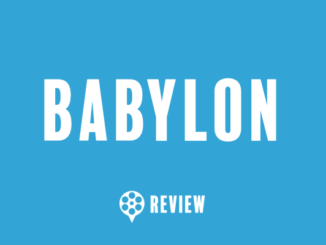On October 25th, 1978, horror was changed forever. With the release of Halloween, a new era was welcomed and molded the genre for most of the 80’s and 90’s. While films like Psycho and Black Christmas helped pave the way, John Carpenter’s Halloween brought the modern slasher film to the mainstream.
Carpenter’s Halloween incorporated the importance of tone, atmosphere, and music. The film blends all three beautifully and aids to its greatness and lasting impact on cinema. The term “often replicated, never duplicated” comes into play when talking about the films that attempted to copy Halloween’s style. Films like Friday the 13th, Prom Night, and Sleepaway Camp attempted to create their own Halloween but failed to realize one important detail – character development. 1978’s Halloween had cinephiles rooting for our heroes/heroines, unlike these other films whose focus seemed to be solely on body count rather than development.
Since 1978, numerous sequels have been released and yet none have been able to replicate the brilliance of Halloween. As a matter of fact, the Halloween franchise is muddled with the worst continuity in a horror franchise of all time. The canon is currently heading into its 5th universe. The original Halloween arch spanned 1,2,4,5,6, the stand-alone Season of the Witch, H20 and Resurrection, the remakes by Rob Zombie and this David Gordon Green’s Halloween.
Despite the years of mediocrity of the franchise, there is no film I was looking forward to more this year than Halloween. That anticipation was met with a sincere smile as David Gordon Green’s Halloween replicates what Creed and Star Wars: The Force Awakens did to their respective franchises in 2015. It resurrected them and placed them in the forefront of today’s pop culture discussion. Halloween is not only a very good film but is arguably one of the best horror sequels in over 20 years.
Halloween captures the spirit and tone set by John Carpenter back in 1978 and while not coming close to surpassing its predecessor’s brilliance, David Gordon Green goes back to basics. Haddonfield is no longer just a backdrop but a character within the film aiding in establishing the atmospheric tension missing from many of the sequels. For the first time in decades, Haddonfield feels like Haddonfield back in 1978.
Speaking of David Gordon Green, over the past year, there has been a lot of talk amongst fans about Green and Danny McBride’s involvement with this project. While I have never been a fan of McBride, David Gordon Green has been hit or miss when it comes to his films. Being honest and despite it being my most anticipated film of the year, I was a bit hesitant to be too excited over the film before its release. After watching it though, it’s quite clear that they both honored the original and the franchise as a whole through the use of discreet nods to these films in the script. What works best about these nods is that none of them feel forced. Each of these Easter eggs works into the story well and allows fans to appreciate them. You have to watch carefully to catch them all and if you never saw any of the other movies, you wouldn’t even know what it might be referencing due to its subtlety.
David Gordon Green’s direction should also be commended. While fans may not all love the film, there is no denying that this is the best crafted and directed Halloween film since the original. There are some incredible shots throughout, including a one-take shot of Michael going house to house, which is absolutely terrifying. That scene alone is the best shot this franchise has had in over 30 years and it fully reestablishes Michael as not just a menacing force but as The Shape.
Nick Castle has widely been considered the definitive Michael Myers. James Jude Courtney immediately enters the conversation as one of the finest portrayals of Michael. From the head tilt to the set-up, Courtney is able to do something unseen in quite some time – making Myers, not just a force onscreen but something that terrifies the audience.
One thing I noticed in this film and in the original is the great respect it has towards the women in both films. 1980’s slasher films usually present us with unsympathetic and objectified females, while Laurie, Annie, and Lynda are people we care about. That’s all a credit to to producer Debra Hill who wrote the dialogue between the three female leads (Jamie Lee Curtis as Laurie, Nancy Loomis as Annie, and P.J. Soles as Lynda) to give it authenticity. They’re funny. They small-talk about boys and they’re believable. Something other horror films including some of the Halloween sequels have suffered from not having in their plots. David Gordon Green is able to capture that same respect for its female characters in our new film. The friendship between Allyson Strode and Vicky feels authentic and neither feels like fodder placed at the forefront to be eventually taken down.
Karen Strode and Laurie’s relationship is also something to rave about. Gordon is able to create a shade of gray that allows viewers to fully understand why Karen resents her mother, along with Laurie’s fear of Michael eventually returning.
In her performance as Laurie Strode, Jaime Lee Curtis is absolutely sensational in this film. Her best overall performance since True Lies and her best franchise performance since 1978, Curtis embodies Strode and is able to express her fear, readiness for his return, all while conveying that she continues to live her trauma throughout the film. Some moments within the film like the moment she hears of Michael’s escape brings back memories of Donald Pleasance in the original film. Pleasance is able to express a sense of both shock and “I knew this would happen” with just one look.
One of the biggest questions going into the film was the two reporters seen in the trailer. A small subtle reveal is that they are true-crime podcasters, which is a nice nod to the increasing popularity of podcasting. While they are unlikeable in every sense of the word, they are similar to the envelope of money in Alfred Hitchcock’s Psycho. The podcasters like the envelope of money are what get the plot started. We don’t get Marion arriving at the Bates Motel without the money being the catalyst just as we are not reintroduced to Michael Myers without the reporters. Hitchcock called it the MacGuffin – not important to the central plot of the film but still a necessary device.
John Carpenter is back with a brand new score, which is phenomenal. Each moment and entry of music into a scene aids to intensifying the tension during crucial moments within the film. I have had the score on repeat since its release last Friday and don’t see myself changing it anytime soon. The score is a modernization of the original Halloween score with Carpenter being able to use equipment not at his disposal back in 1978 and boy does it show. The reimagining of his iconic theme for the film is a masterpiece on full display for fans.
While I have been raving about the film thus far, Halloween is far from perfect. There are unnecessary characters that we met that resolve in no payoff, along with a school dance that feels out of place and out of context to the overall tone of the film. However, nothing is more cringe-worthy than the opening where the inmates start laughing and going crazy after seeing Michael’s mask. While I understand it was set to represent the inmates understanding that the mask represents evil, the scene comes off as extremely cheesy.
There is no denying David Gordon Green’s Halloween is the best entry into the franchise in almost 30 years. It is undoubtedly well crafted, directed, and shot. This entry seems to have garnered some Last Jedi feedback from fans thus far that have spouted some asinine remarks such as “the thorn trilogy was better,” and “I rather watch Resurrection.” To those “fans”, I say for the first time in a long time, we have a Michael Myers who is scary and menacing and a film we can be proud of. If you’re criticizing this film and calling it completely flawed, were you ever a Halloween fan, to begin with?





